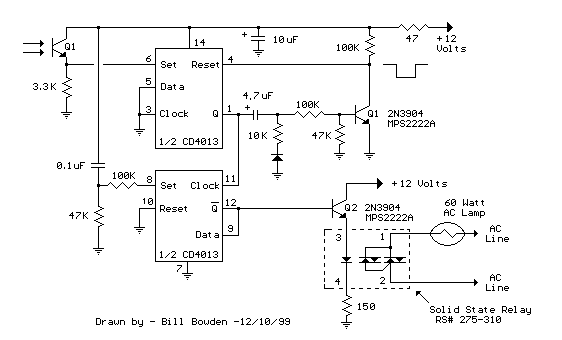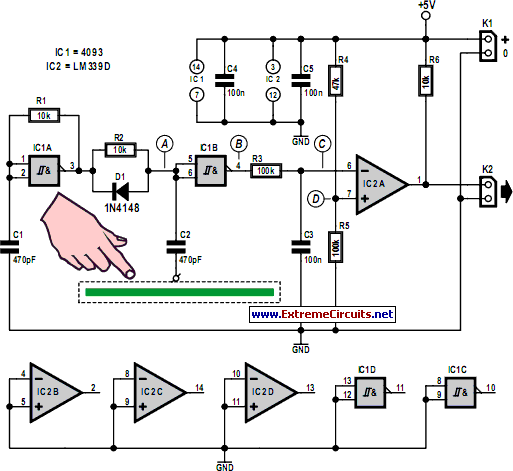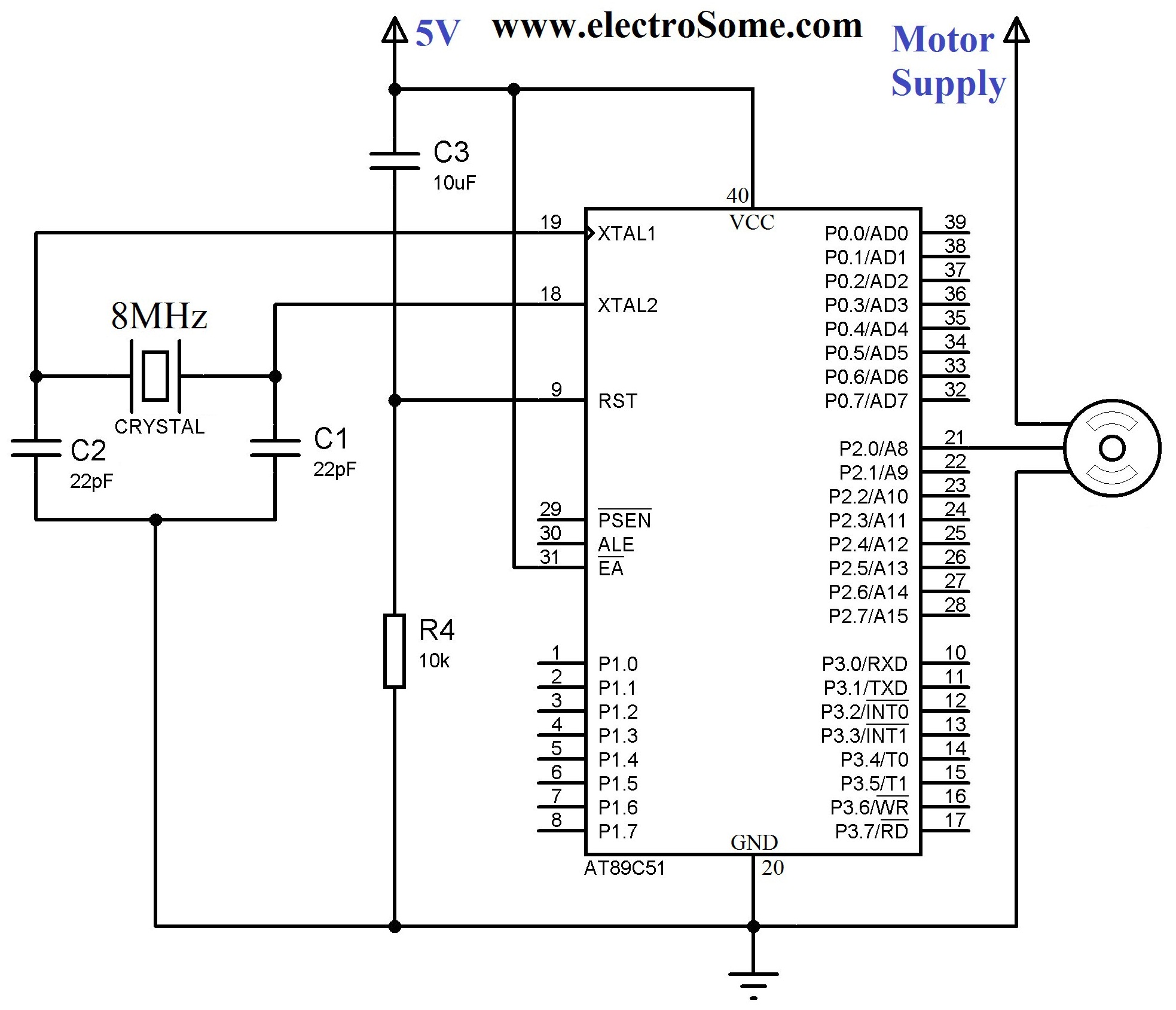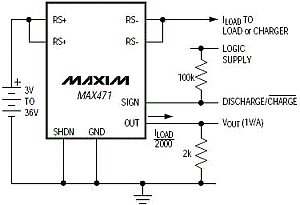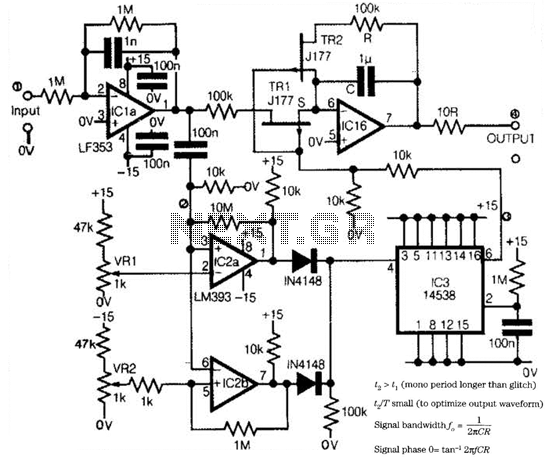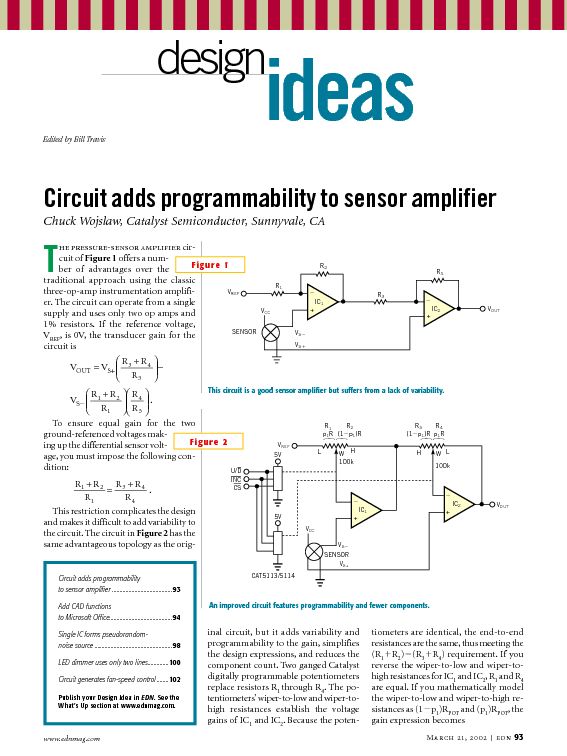
Analog Clock And Temperature sensor On An Oscilloscope using Arduino
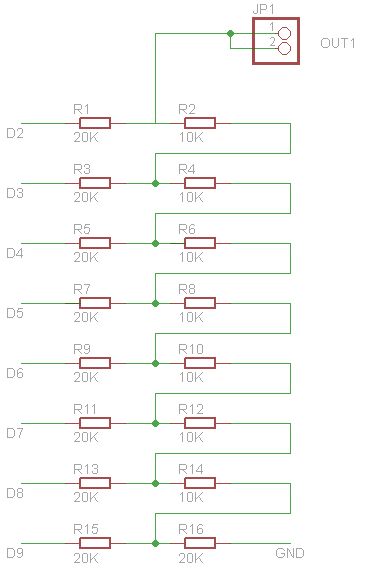
Scopeclock is a user-friendly hardware device designed to enhance the functionality of X-Y capable analog oscilloscopes. This hardware allows for the conversion of an analog oscilloscope into a scope clock. The project was developed by a team at CEDT NSIT, guided by Professor Dhananjay V. Gadre.
Analog Clock Mode serves as the default operational mode. Upon resetting the Arduino, an analog clock is displayed on the oscilloscope screen, accurately keeping time with clock hands. The mode can be switched using a push button. When the button is pressed and released, an interrupt is triggered, changing the mode to Thermometer, which shows the current ambient temperature. After a brief period, the mode reverts to the analog clock.
A Digital-to-Analog Converter (DAC) is a device that translates digital (usually binary) codes into analog signals. The conversion process can introduce signal degradation; therefore, the design details are typically chosen to minimize errors. Due to cost considerations and the need for matched components, DACs are primarily produced as integrated circuits (ICs). Various DAC architectures exist, each with distinct advantages and disadvantages. The appropriateness of a specific DAC for an application is assessed through several measurements, including speed and resolution. Depending on the requirements, a DAC with 2 or more bits of resolution may be employed. Among the available configurations, an R-2R Ladder is a simple and cost-effective method for digital-to-analog conversion, utilizing repetitive arrangements of precision resistors in a ladder-like structure. This project utilizes two 8-bit R-2R ladder configurations to convert the digital signals from the Arduino into analog form, which are subsequently fed into the two channels of the oscilloscope. The DACs are mounted on an Arduino protoshield alongside a temperature sensor circuit, with connections to the Arduino pins illustrated in the schematic.
A thermistor is a type of thermal resistor whose resistance varies with temperature. While all resistors exhibit slight changes in resistance with temperature, thermistors are engineered to produce significant resistance changes—often exceeding 100 ohms per degree. There are two primary types of thermistors: NTC (negative temperature coefficient) and PTC (positive temperature coefficient). NTC thermistors are commonly utilized for temperature measurement, while PTC thermistors are frequently employed as resettable fuses. As temperature rises, the resistance of PTCs increases, limiting current flow and providing circuit protection. Thermistors offer several advantages over other temperature sensors, such as analog output chips (e.g., LM35/TMP36), digital temperature sensor chips (e.g., DS18B20), and thermocouples.
This comprehensive design improves the versatility of analog oscilloscopes, allowing users to visualize both time and temperature data effectively. The integration of an R-2R ladder DAC and thermistor enhances the overall functionality and measurement capabilities of the Scopeclock project.Scopeclock is an easy to use hardware to make your X-Y capable analog oscilloscope more useful. Using this simple to use hardware you can convert your analog oscilloscop e into a scope clock. This project was me and my friend kshitij gupta at CEDT nsit under the guidance of Prof. Dhananjay V. Gadre. Analog clock Mode This is the default mode of operation. When the arduino is reset an analog clock appears on the oscilloscope screen. It keeps accurate time using clock hands. The mode is controlled by a push button. On pressing and releasing the pushbutton an interrupt is generated which changes the mode to Thermometer which displays the current temperature of the surrounding. After a few seconds the mode changes to analog clock A Digital-to-Analog converter (DAC or D-to-A) is a device that converts a digital (usually binary) code to an analog signal.
Digital-to-analog conversion can degrade a signal, so conversion details are normally chosen so that the errors are negligible. Due to cost and the need for matched components, DACs are almost exclusively manufactured on integrated circuits (ICs).
There are many DAC architectures which have different advantages and disadvantages. The suitability of a particular DAC for an application is determined by a variety of measurements including speed and resolution. Depending upon the requirement we can use a 2 or more bit resolution DAC. Although many types of DAC configuration are available, an R-2R Ladder is the simple and inexpensive way to perform Digital-to-Analog conversion, using repetitive arrangements of precision resistor networks in a ladder-like configuration.
In this project we have used two 8-bit R-2R ladder formations two convert the digital signal from the arduino into analog form and these are fed to the two channels of the Oscilloscope. The DAC`s are soldered on the arduino protoshield along with temperature sensor circuit, connections of the two DAC with pins of arduino are shown in schematic A thermistor is a thermal resistor a resistor that changes its resistance with temperature.
Technically, all resistors are thermistors their resistance changes slightly with temperature but the change is usually very very small and difficult to measure. Thermistors are made so that the resistance changes drastically with temperature so that it can be 100 ohms or more of change per degree!
There are two kinds of of thermistors, NTC (negative temperature coefficient) and PTC (positive temperature coefficient). In general, you will see NTC sensors used for temperature measurement. PTC`s are often used as resettable fuses an increase in temperature increases the resistance which means that as more current passes through them, they heat up and choke back` the current, quite handy for protecting circuits!
Thermistors have some benefits over other kinds of temperature sensors such as analog output chips (LM35/TMP36 ) or digital temperature sensor chips (DS18B20) or thermocouples. 🔗 External reference
Analog Clock Mode serves as the default operational mode. Upon resetting the Arduino, an analog clock is displayed on the oscilloscope screen, accurately keeping time with clock hands. The mode can be switched using a push button. When the button is pressed and released, an interrupt is triggered, changing the mode to Thermometer, which shows the current ambient temperature. After a brief period, the mode reverts to the analog clock.
A Digital-to-Analog Converter (DAC) is a device that translates digital (usually binary) codes into analog signals. The conversion process can introduce signal degradation; therefore, the design details are typically chosen to minimize errors. Due to cost considerations and the need for matched components, DACs are primarily produced as integrated circuits (ICs). Various DAC architectures exist, each with distinct advantages and disadvantages. The appropriateness of a specific DAC for an application is assessed through several measurements, including speed and resolution. Depending on the requirements, a DAC with 2 or more bits of resolution may be employed. Among the available configurations, an R-2R Ladder is a simple and cost-effective method for digital-to-analog conversion, utilizing repetitive arrangements of precision resistors in a ladder-like structure. This project utilizes two 8-bit R-2R ladder configurations to convert the digital signals from the Arduino into analog form, which are subsequently fed into the two channels of the oscilloscope. The DACs are mounted on an Arduino protoshield alongside a temperature sensor circuit, with connections to the Arduino pins illustrated in the schematic.
A thermistor is a type of thermal resistor whose resistance varies with temperature. While all resistors exhibit slight changes in resistance with temperature, thermistors are engineered to produce significant resistance changes—often exceeding 100 ohms per degree. There are two primary types of thermistors: NTC (negative temperature coefficient) and PTC (positive temperature coefficient). NTC thermistors are commonly utilized for temperature measurement, while PTC thermistors are frequently employed as resettable fuses. As temperature rises, the resistance of PTCs increases, limiting current flow and providing circuit protection. Thermistors offer several advantages over other temperature sensors, such as analog output chips (e.g., LM35/TMP36), digital temperature sensor chips (e.g., DS18B20), and thermocouples.
This comprehensive design improves the versatility of analog oscilloscopes, allowing users to visualize both time and temperature data effectively. The integration of an R-2R ladder DAC and thermistor enhances the overall functionality and measurement capabilities of the Scopeclock project.Scopeclock is an easy to use hardware to make your X-Y capable analog oscilloscope more useful. Using this simple to use hardware you can convert your analog oscilloscop e into a scope clock. This project was me and my friend kshitij gupta at CEDT nsit under the guidance of Prof. Dhananjay V. Gadre. Analog clock Mode This is the default mode of operation. When the arduino is reset an analog clock appears on the oscilloscope screen. It keeps accurate time using clock hands. The mode is controlled by a push button. On pressing and releasing the pushbutton an interrupt is generated which changes the mode to Thermometer which displays the current temperature of the surrounding. After a few seconds the mode changes to analog clock A Digital-to-Analog converter (DAC or D-to-A) is a device that converts a digital (usually binary) code to an analog signal.
Digital-to-analog conversion can degrade a signal, so conversion details are normally chosen so that the errors are negligible. Due to cost and the need for matched components, DACs are almost exclusively manufactured on integrated circuits (ICs).
There are many DAC architectures which have different advantages and disadvantages. The suitability of a particular DAC for an application is determined by a variety of measurements including speed and resolution. Depending upon the requirement we can use a 2 or more bit resolution DAC. Although many types of DAC configuration are available, an R-2R Ladder is the simple and inexpensive way to perform Digital-to-Analog conversion, using repetitive arrangements of precision resistor networks in a ladder-like configuration.
In this project we have used two 8-bit R-2R ladder formations two convert the digital signal from the arduino into analog form and these are fed to the two channels of the Oscilloscope. The DAC`s are soldered on the arduino protoshield along with temperature sensor circuit, connections of the two DAC with pins of arduino are shown in schematic A thermistor is a thermal resistor a resistor that changes its resistance with temperature.
Technically, all resistors are thermistors their resistance changes slightly with temperature but the change is usually very very small and difficult to measure. Thermistors are made so that the resistance changes drastically with temperature so that it can be 100 ohms or more of change per degree!
There are two kinds of of thermistors, NTC (negative temperature coefficient) and PTC (positive temperature coefficient). In general, you will see NTC sensors used for temperature measurement. PTC`s are often used as resettable fuses an increase in temperature increases the resistance which means that as more current passes through them, they heat up and choke back` the current, quite handy for protecting circuits!
Thermistors have some benefits over other kinds of temperature sensors such as analog output chips (LM35/TMP36 ) or digital temperature sensor chips (DS18B20) or thermocouples. 🔗 External reference
